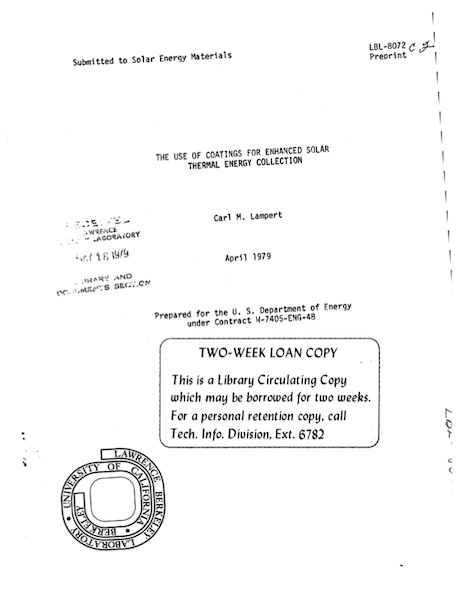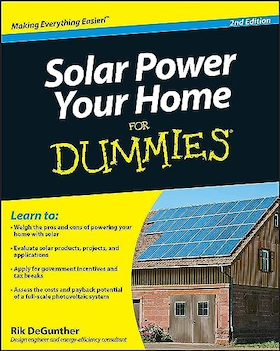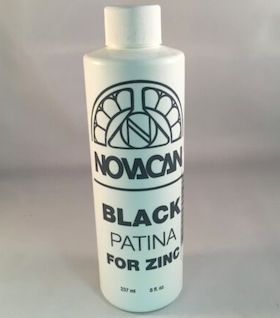
-----
Good selective coatings for solar absorber -- black chrome & alternatives
Quickstart:
A good coating for solar applications will capture as much of the incoming solar radiation as practical, reflecting little of it (high absorptivity) and it will emit as little as practical back out (low emissivity). Simple black paint can offer high absorptivity, but its emissivity is usually high; additionally some lower quality paints will have poor UV resistance or cause fogging of the cover glass, and in the event of stagnation (water not flowing) paint is subject to problems from overheating.
Traditionally, black chromium plating has offered the best absorptivity vs. emissivity, but newer blue PVD sputter coatings are probably marginally better, but more expensive, making the choice harder.
RFQ: Do you know any places that can achieve high absorptivity and low IE emissivity in black chrome for low quantity applications? I haven't had success on the last few vendors I've tried.
Do you have a name for these electro-sputter deposits that are blue in color and have high absorptivity and low IR emissivity? Is there a vendor you could point me to that will do low quantity?
Thanks!
Engineer - Colorado
September 18, 2025
privately respond to this RFQ
Ed. note: As always, gentle readers: technical replies in public and commercial replies in private please (huh? why?)
Tip: Readers are welcome to browse this site anonymously!
But its main purpose is to build worldwide camaraderie through sharing.
Those who believe in this might not engage with anonymous posters.
⇩ Related postings, oldest first ⇩
Q. Black Chrome Plating is supposed to be useful for Solar Applications but could anybody explain how a black coating can have good absorption and poor emissivity, kind of goes against what we all learned about blackbody radiation. Can Black Chrome Plating be done on all substrates or does it have to be done on a particular base metal?
Thanks in advance.
Firdosh S [last name deleted for privacy by Editor]- Bangalore, India
2001
A. Don't know about the theory, but it works. Black chromium, as applied from proprietary solutions is a very useful finish for solar collectors.
It should be applied over nickel (on steel or copper) to improve the corrosion protection.

Tom Pullizzi
Falls Township, Pennsylvania
A. THE BLACK CHROME IS JUST ABOUT THE ONLY FINISH THAT CAN WITHSTAND THE CONSTANT EXPANSION AND CONTRACTION OF A COPPER PLATE OR TUBING.
MARTIN M [last name deleted for privacy by Editor]- NORTHVILLE, Michigan
2005
![]() Thanks for participating, Martin. I don't think that's quite accurate though. A number of platings have outstanding adhesion; black chromium offers not just good adhesion, but high absorptivity and low emissivity for efficient solar collection, plus (unlike many paints) no volatiles to degrade from UV, or out-gas and cloud the glass covers over the solar collectors.
Thanks for participating, Martin. I don't think that's quite accurate though. A number of platings have outstanding adhesion; black chromium offers not just good adhesion, but high absorptivity and low emissivity for efficient solar collection, plus (unlike many paints) no volatiles to degrade from UV, or out-gas and cloud the glass covers over the solar collectors.
Firdosh: Some references like
www.solarmirror.com/fom/fom-serve/cache/43.html
show the absorptivity of black chrome as about 0.87 and the emissivity as about 0.09, for a very favorable 9.7 ratio.
As a slight simplification, absorptivity means the propensity of a material to accept and absorb the radiant energy it is exposed to, as opposed to reflecting it. And emissivity is the propensity to emit its contained heat as radiant energy as opposed to retaining it. So an ideal solar collector has high absorptivity for solar radiation but low emissivity at actual earth-bound temperatures of, say, 0 - 200 °C. I don't pretend that I fully understand absorptivity and emissivity, but it seems that absorptivity is fairly closely tied to the color of the material, with black being best, so black chrome has good absorptivity. Emissivity on the other hand is more closely related to the smoothness and polish of the surface. A highly polished surface has fewer atoms exposed to vibrate and release radiant energy than a sponge, for example, would have. So black chrome has the color and polish to exhibit high absorptivity and low emissivity.

Ted Mooney, P.E.
Striving to live Aloha
finishing.com - Pine Beach, New Jersey
Ted is available for instant help
or longer-term assistance.
Multiple threads merged: please forgive chronology errors and repetition 🙂
Q. Sir,
I am doing M.tech in Energy System Engg. I found your information regarding selective & non-selective surfaces for solar collectors very useful in presenting a seminar. So please send more information regarding selective & non selective surfaces of solar collectors, its properties, coatings, absorbers, methods of coatings, procedures and its life.
Thanking you sir,
Koti Prakash j.l- Hospet, Karnataka, India
2002
![]() Hi cousin Koti. Those who are interested in the science behind solar coatings will find this report from Lawrence Livermore Laboratories very informative ⇨
Hi cousin Koti. Those who are interested in the science behind solar coatings will find this report from Lawrence Livermore Laboratories very informative ⇨
If you have specific questions our readers will usually try to answer them;
Please send a copy of your presentation when it's done, so the other readers here can profit from it.
Thanks & Regards,

Ted Mooney, P.E.
Striving to live Aloha
finishing.com - Pine Beach, New Jersey
Ted is available for instant help
or longer-term assistance.
RFQ: I need to have metal sheet plated (or perhaps treated) to yield a reasonable performance solar collecting surface that would remain stable for a few years if the surface is periodically heated to 300 °C in air. Probably the black chrome platings described in the literature are more than adequate. I don't believe any of the spray-on paint type coatings are stable enough. My effort is investigative (applications: heat sterilization, solar cooking, others), and an initial order would be small.
What is specifically needed: Quantity: 4 Single sided coating with above described surface on: Sheets of metal 24 in. X 24 in. X .030 in. (approx. dimensions) Material: steel, copper, or aluminum (choice of metal is not very important, although if my effort results in production, the cost of copper would probably be to great. One additional specification: The sheet metal is to be rolled into a cylindrical/conical shape, thus putting the coating under tension. The coating has to be able to survive such a forming process. Possibly this means that the metal has to be first formed to its (nearly) final shape, and then coated.
Martin G [last name deleted for privacy by Editor]inventing solar collector - Dearborn, Michigan, USA
2003
Ed. note: This RFQ is outdated, but technical replies are welcome, and readers are encouraged to post their own RFQs. But no public commercial suggestions please ( huh? why?).
A. Hi, Martin. I agree that black chrome plating would be the first choice. But chrome plating is rather brittle, so the parts ought best be plated after forming. Good luck.
Regards,

Ted Mooney, P.E.
Striving to live Aloha
finishing.com - Pine Beach, New Jersey
Ted is available for instant help
or longer-term assistance.
Q. I am fabricating flat plate solar water heaters. I need a selective coating to apply to the plate, to absorb as much energy and emit as little energy as possible, and to withstand temps up to 220° F. Need a black matte selective coating. I know Thurmalox was a brand to use but I don't find any more info specific to this application. Please help with your info in this.
Thank you,
Jesus BermudezVarnier - San Diego, California, USA
2003
A. Hi Jesus.
I browsed a library on this topic some years ago and recall that at that time there were three good coatings: best was black chrome plating, then black oxided copper, then regular nickel chrome plating. At that time the author found no black paint that was worthwhile, not just because of optical properties for the coating itself, but because outgassing from the paint clouded the glass cover of the enclosing box. The situation probably has changed since then, with Thurmalox 250 now widely used for solar collectors; but if the collector is enclosed, don't forget to investigate the possibility of any gassing from the coating obscuring the cover glass.
The absorptivity of Thurmalox 250 is claimed by Dampney to be 0.96, and the emissivity (depending on thickness) about 0.65.
To my limited understanding, this still doesn't compare favorably to black chrome's reputed .87 absorptivity and .09 emissivity.
Regards,

Ted Mooney, P.E.
Striving to live Aloha
finishing.com - Pine Beach, New Jersey
Ted is available for instant help
or longer-term assistance.
RFQ: I need 15 square meters of solar selective (high visible absorbance, low infrared emissivity) black chrome coated copper sheet of the type used in solar water heaters- thickness between .004" to .030". I would prefer a minimum sheet dimension of 20", but narrower strips could be acceptable. This material is needed for development of a solar heater. Please quote, stating specifications of the material you can supply.
Martin G [last name deleted for privacy by Editor]inventor - Dearborn, Michigan, USA
2003
Ed. note: This RFQ is outdated, but technical replies are welcome, and readers are encouraged to post their own RFQs. But no public commercial suggestions please ( huh? why?).
Q. I am a student in the National University of sciences and technology Pakistan. I am doing a project on solar water heating. We have looked for solar panels but could not find one. I needed help in making one of our own. We have a well equipped science lab at the university. Can you guide me on how to coat a metal with black Chromium or any other suitable selective coating for my purposes .
Alil SheikhStudent (doing a project on solar energy) - Islamabad, Punjab, Pakistan
2004
A. You can use Chromate Conversion coatings followed by dying in black color. You can also go for Black anodizing--a very commercial process.
Engr. M N Tahir- Islamabad, Pakistan
A. Hi. I appreciate Mr. Tahir's effort to help -- and I could be mistaken and he may know more than I do on the subject -- but I don't think dyed chromate conversion coatings or anodized coatings are good solar selective surfaces.
Alil: Proprietary black chromium plating baths like Atotech's ChromOnyx use additives like (I believe) acetic acid ⇦ on eBay or Amazon [affil link] and fluorides, free of sulphate, to produce the black color. Still, black paint like Thurmalox 250 may be more appropriate than black chrome plating if you want to apply it yourself.
Regards,

Ted Mooney, P.E.
Striving to live Aloha
finishing.com - Pine Beach, New Jersey
Ted is available for instant help
or longer-term assistance.
Q. I am a PhD student working on solar selective surfaces. Just want to get in contact with people, institutions and organizations working in this field of study. Want to know latest development in solar selective surfaces. Also interested to know the history of solar selective surfaces and leading manufacturers of these surfaces. Interested to know the related magazines and books on the subject. Anyone else involve in the study of solar selective surfaces.I am also interested to know about its application on solar thermal systems. Manufacturing techniques of solar selective surfaces.
Sana UllahStudent- PhD - Islamabad, Pakistan
2005
Q. I am keenly interested in the these selective solar absorbers and would like to know more about them.
Ngengere Ngari- Nairobi, Kenya
2005
RFQ: In approximately 1980, a friend and I built a flat roof mounted water solar system on a roof 30'(N/S) x 60'(E/W) consisting of 14 - 4'x 8' copper "selective surface" collectors purchased from Phelps Dodge Copper Co. This building was a laundromat, and had a 3,000 gal insulated storage tank in the building. It was a total drain back system, thus no anti-freeze was ever needed even in cold temperature extremes (-30 F). An efficient heat exchanger allowed us to heat all incoming city water to above 120° for up to 4 weeks at a time in the summer without using any additional heat source, and pre-heated water in winter to between 70° and 90°, even on cold sunny days in January. The whole array (14) collector insulated boxes were built as one unit and faced south, in summer at a 35 degree angle with the roof, and in winter were raised to a 65 degree angle. We were located 17 miles north of the 45th parallel in Northeastern Wisconsin.
I now live in New Ulm MN, and have a laundromat which I would like to do the same thing with, but cannot seem to find the same type of collector panels to build a similar system. My thanks in advance for any help in locating a solar supply company that I can buy individual components and build my own system once again.
Norman E [last name deleted for privacy by Editor]Laundromat Owner - New Ulm, Minnesota, USA
2006
Ed. note: This RFQ is outdated, but technical replies are welcome, and readers are encouraged to post their own RFQs. But no public commercial suggestions please ( huh? why?).
Q. There are many possible selective coatings.
For solar thermal collectors, are there any processes or products that let the home owner / experimenter do the coating? Please describe the process and any precautions to take. Are there generally available services for such coatings?
solar design, installation - Bumpass, Virginia
2006
A. Hi Peter. I understand, based on a book I read years ago, that blackened copper is significantly better than paint. Copper can be blackened with liver of sulfur
⇦ on
eBay or
Amazon [affil link]
; nothing is without hazard, but it is sold by arts and crafts stores, so it may be "safe enough" if used with caution and good ventilation.
Hazard instruction is a subject for hands-on training. An internet forum is a one-room schoolhouse attended by 2nd grade students and post-doctorates, amateurs working on their dining room table and researchers working under lab hoods in state of the art cleanrooms, so unfortunately the idea of describing "any precautions" is problematical.
To my understanding, black chromium plating is still one of the best coatings for solar collectors; but it cannot be done by a home owner / experimenter. At the other end of the spectrum, black paint is not useless, but a UV-resistant, "low gassing", type like Thurmalox 250 must be selected to prevent fogging of the cover glass in order to get the most out of it. Another issue is you should buy non-reflective glass, as you don't want a lot of the available rays to bounce off the glass before they even get to the collector.
Good luck!

Ted Mooney, P.E.
Striving to live Aloha
finishing.com - Pine Beach, New Jersey
Ted is available for instant help
or longer-term assistance.
Q. Hi all,
I am looking for selective coating for the Solar Panel Absorber (Aluminum or copper sheets). What kinds and where can I get them?
It is a solar panel with copper tubing inside for solar water heating.
Thanks
Hobbyist - Hong Kong
2006
A. Best coating for solar heating is black chrome.
Tom Gallant- Long Beach, California, USA
Q. For solar collectors is a black aluminum oxide finish superior to matte paint for the absorber? Does black aluminum oxide have act as a better selective coating then paint? Thank you.
Adam Prince- Brick, New Jersey
2008
A. My understanding is that black chrome is the best collector surface, but blackened copper is very good, and most paints are not very good. Besides not having low emissivity, I understand that most paints outgas and tend to "fog" the glass cover of the enclosing box hampering efficient collection of solar radiation. But there are good books on the subject and I haven't looked at them in years, I'm afraid.
I don't know quite what black aluminum oxide would actually be, Adam. Black is not the natural color of aluminum oxide to my knowledge, but maybe you are speaking of anodized aluminum which has been dyed black?

Ted Mooney, P.E.
Striving to live Aloha
finishing.com - Pine Beach, New Jersey
Ted is available for instant help
or longer-term assistance.
Can we do black chrome in a lab?
Q. Hi,
What are the conditions required to add black chrome to the absorber sheet? Is it something like a spray? Or does it need a lot of processes to be finally a coated absorber?
The thing is, I need to add black chrome to the sheet metal at my labs by myself ... Can I?
- Cairo, Egypt
July 31, 2013
A. Hi Mahmoud. It may not be completely impossible to do black chromium electroplating in your lab, but it will probably be impractical because, yes, it does involve a lot of processes including electroplating from a toxic and carcinogenic chromic acid (hexavalent chromium) bath. But it is generally accepted these days that paints designed for the purpose are often good enough. Thumalox 250 has very high absorptivity (comparable to black chrome or a bit better), reasonably low emissivity (although certainly not equal to black chrome). They claim it does no outgassing, and it is relatively easy and inexpensive to dispense from a spray can. Good luck.
Regards,

Ted Mooney, P.E.
Striving to live Aloha
finishing.com - Pine Beach, New Jersey
Ted is available for instant help
or longer-term assistance.
A. In the interest of precision on this topic, compare these absorbance values:
flat black paint: .96 - .98
thermalox 250: .96
black chrome: .87
And these emmisivities:
flat black paint: .96 - .98
thermalox 250: .65
black chrome: .09
Flat black paint, of a high temp variety like BBQ paint, is an excellent absorber. It's high emissivity, however, means that it re-radiates a lot of energy in the infra-red. If used at low temps, it works quite well. At high temps (large values of temp differential between absorber temp and ambient), it will radiate everything it absorbs, leaving nothing to collect.
Thermalox should mitigate this effect to a small degree.
Black chrome, while having a lower absorbance, has an emissivity 1/10 of it's absorbance. So, it's absorbing 10 times more energy than it's emitting. It's high temp performance is very good.
Newer selective coatings are electro-sputter deposited and are blue in color. Their absorbances exceed .90 and emissivities are in range of .05. They exhibit outstanding performance at high temps.
- Nampa, Idaho USA
May 7, 2014
RFQ: Hello,
I'm working on a project of solar hot air to power Wood-drying kiln.
I want to know what are those blue selective coatings you speak about. I found TINOX:
www.almecosolar.com/en/products/solar_absorber/tinox_energy_cu
-- but it does not seem to be available in North America. Do you know of other U.S. and Canadian suppliers.
Thank you
- Sainte-Brigitte-de-Laval, Quebec, Canada
May 20, 2014
Ed. note: This RFQ is outdated, but technical replies are welcome, and readers are encouraged to post their own RFQs. But no public commercial suggestions please ( huh? why?).
RFQ: I previously bought SOLKOTE HI/SORB to paint 1,200 sq meters of corrugated aluminum as part of a thermal solar cell used to dry meat products. I am building another thermal solar cell (similar size) but can't find the original manufacturer/vendor of SOLKOTE.
Is this product still available and, if not, what other bulk solar absorbing paint would replace it?
- Albury, NSW, Australia
May 21, 2014
Ed. note: This RFQ is outdated, but technical replies are welcome, and readers are encouraged to post their own RFQs. But no public commercial suggestions please ( huh? why?).
A. Hi Simon. We don't compare brands here (why?), but Solkote appears to be available from solec.org; if it still proves unavailable to you then Thurmalox is another brand of solar selective paint intended to work in a similar way.
Regards,

Ted Mooney, P.E.
Striving to live Aloha
finishing.com - Pine Beach, New Jersey
Ted is available for instant help
or longer-term assistance.
A. Hi Simon,
You can find Solkote product here: www.solec.org
They ship all around the world. Good luck in your project
Cyril
- Sainte-Brigitte-de-Laval, Quebec, Canada
May 22, 2014
A. Hi, Trying to build a better collector, possibly using selective coatings as they appear to be better. I have built many and read a great deal about others that have built both hot air and water panels.
You can find quite a bit of info at these two sites:
www.builditsolar.com/
simplysolar.supporttopics.com/
Gary from builditsolar did some comparisons between different flat and glossy paints compared to Solcote (I think), and found very little difference between the "selective" paint and normal flat black paint. A lot of the guys like the rustoleum "ultra flat black" camo paint.
While some people complain about "off gassing" smells, I've never heard of the complaint of fogging glass from off-gassing or seen it. Our usual fix to off-gassing is to paint the surface and let it bake/stagnate for several days in the sun before we use it to warm the air in the house.
My current thought is to purchase something like BlackFlex, a selective coating applied to a thick foil with very high absorption and very low emissivity
www.cleardomesolar.com/solarflex.html
Another product that works well but has not been tested for selectivity is Cinefoil, as used for photography. It has high absorption but unknown emissivity (but works well in the applications I have seen.
www.bhphotovideo.com/c/product/44690-REG/Rosco_RS100113_Matte_Black_Cinefoil.html
Not trying to dispute, but trying to add real word experience by people trying to build better collectors with available materials.
Dan
- Duluth, Minnesota, USA
December 23, 2014
![]() Hi Daniel. Thanks for the interesting posting based on experience. I appreciate your finding that "fogging of the glass" is not really much of a consideration. We took several formerly-separate short threads and combined them onto this one page. I had responded to each before they were combined -- leaves it looking like I kept emphasizing and re-emphasizing this possible "fogging" issue like a mantra, whereas it was actually just something that I read once; I'm glad to hear that you feel it's overstated. Thanks.
Hi Daniel. Thanks for the interesting posting based on experience. I appreciate your finding that "fogging of the glass" is not really much of a consideration. We took several formerly-separate short threads and combined them onto this one page. I had responded to each before they were combined -- leaves it looking like I kept emphasizing and re-emphasizing this possible "fogging" issue like a mantra, whereas it was actually just something that I read once; I'm glad to hear that you feel it's overstated. Thanks.
Regards,

Ted Mooney, P.E.
Striving to live Aloha
finishing.com - Pine Beach, New Jersey
Ted is available for instant help
or longer-term assistance.
A. Ted,
Thanks for the response. One of the reasons we do not see "fogging" may be our panel temperatures. We make a lot of hot air panels, (we just circulate air though them and heat it up), and the goal is to not have the panel get too hot. Higher flow keeps the heat down in the panel and this lower temperature may keep the off-gassing down. Ideally the panel will be operating at less than 150 °F to run more efficiently so you have less loss out the glazing. Liquid panel temperatures run higher but as long as everything works and the water keeps flowing the temperatures generally stay under 200 °F and we have not seen fogging that we associated with the paint.
Since my goal is to build a better panel and applying Black Chrome at home is generally not an option, are you aware of anything that is available and could be applied with a home or auto spray kit. (such as SolKote in a gallon can) Trying to keep the cost down is a big concern usually, this and availability is why we generally use the cheaper flat black spray paints. Many people have used the high temperature "grill" paint but it does need very high temps to cure properly and may not get to that temperature in the panel. This causes the "smell" to linger a lot longer.
Thanks again, Dan
- Duluth, Minnesota, USA
December 26, 2014
![]() Without claiming to be an expert on the subject, I note that 'stagnation' can reportedly become an issue (where for one reason or another, the flow of air or water is stopped and the solar surface overheats). For these events paint's temperature resistance is less than inorganic coatings, and perhaps this leads to fogging of cover glass, or perhaps not. Thanks.
Without claiming to be an expert on the subject, I note that 'stagnation' can reportedly become an issue (where for one reason or another, the flow of air or water is stopped and the solar surface overheats). For these events paint's temperature resistance is less than inorganic coatings, and perhaps this leads to fogging of cover glass, or perhaps not. Thanks.
Regards,

Ted Mooney, P.E.
Striving to live Aloha
finishing.com - Pine Beach, New Jersey
Ted is available for instant help
or longer-term assistance.
How to Coat galvanized screen black for solar heat applications
Q. Retired US engineer living in Costa Rica. I develop designs for low cost solar heat applications for the third world, using local materials, then make the designs available on the web.
I want to coat galvanized steel screen black to absorb heat in a solar air collector, for food dehydration and cooking. I have been spraying the screen black with hi temp spray paint. Pricey, by local standards... It does the job, but I would rather anodize or electroplate the screen to get it black and hi temp resistant. Easy, cheap, locally available materials... I notice that iron left in hydrogen peroxide leaves the surface a nice black. QUESTION: What might be some simple way to oxidize or otherwise leave my galvanized steel screen a nice high temp resistant (500 °F) black? Need not be particularly abrasive resistant. Battery charger, the right salt or acid added? Gracias...
Retired Solar Engineer, rural Costa Rica - Costa Rica
December 7, 2016
A. Galvanized screening can probably not be practically anodized, despite anodized zinc being an interesting surface.
Although black chromium plating, sputtered metal coatings, and some other dark metallic surfaces can be efficient for solar collectors, they are quite unsimple. I'm not aware of any metallic coatings that could be easily applied to your galvanized surface and offer good solar energy properties, but maybe another reader will offer a more optimistic appraisal. There are, however, good thermal paints these days, and copper (as opposed to galvanizing) can reportedly be oxidizes into being a good solar surface. Good luck.
Regards,
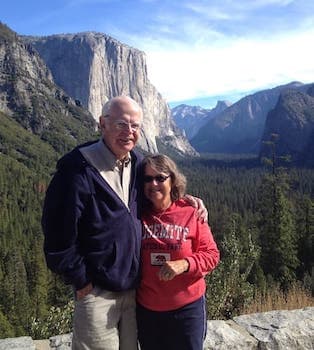
Ted Mooney, P.E. RET
Striving to live Aloha
finishing.com - Pine Beach, New Jersey
Ted is available for instant help
or longer-term assistance.
December 2016
Q. Thanks for responding. Allow me to clarify my design spec.
The implementation is 3rd world. No plating supply houses (Chromium salts are not available unless we can make it here... old bumper??), no home depots, a 'neighborhood' hardware store or pharmacy at best. The focus is to make it doable within these constraints. High efficiency is not the priority. I have worked in high tech environments in the past decades. Now retired doing service work for rural locals here in Costa Rica, with my own challenge to think out of my previous box, to improvise implementations with low tech means. I have done this in other applications with surprising results. It can be quite a challenge and exciting to invent a solution that ends up making a difference in people's lives. I trust there are workable solutions, ...just not there yet. Reaching out to resources of experience on the web to support these folks to dry some cassava so they can make flour and feed their family, and maybe sell some flower to buy a pair of shoes for one of their kids. The black galvanized screen sits in an inclined glazed box, receives heat from the sun and rises up to a cabinet with drying racks in it. An old design. Just trying to improve the solar heat to air transfer characteristics for the dryer with the blackish screen.
Engineers without borders - Costa Rica
December 7, 2016
A. You could "paint" on a solution that discolours the zinc surface, something containing copper would perhaps work, like copper sulphate.

Geoff Crowley
Crithwood Ltd.
Westfield, Scotland, UK
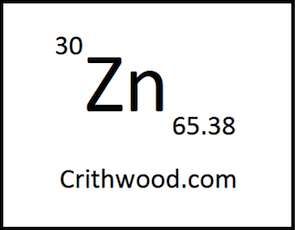
December 9, 2016
Q. Hi fellows, being a beginner in this field, I want to know why a solar selective absorber (SSA) emits radiation in IR region while IR has much less energy as compared to the Visible region. Absorption is a good thing if your SSA converts that light to heat and transfers it to other side of coating/substrate for other purposes.
adil raza- nanjing, China
February 28, 2018
RFQ: I am building a passive solar house with a large Trombe Wall. I am trying to locate a supplier for a selective surface (absorption in visible high, emissivity in infrared low). My calculations show a big advantage in having such. For example, for New Mexico insolation in January, 20 °F outside, R=2.5 f^2hrF/BTU glazing on wall with 0.74 solar transmission, if the emissivity of the wall surface is 0.1, the insulated inside of the wall gets to 61 °FF, but if the emissivity is 0.9, the inside only gets to 40 °F. These ideas have been around since the 1970's. How can I achieve this? Any help appreciated.
Thanks,
- Santa Fe, New Mexico
August 24, 2019
Ed. note: This RFQ is outdated, but technical replies are welcome, and readers are encouraged to post their own RFQs. But no public commercial suggestions please ( huh? why?).
A. Hi. As far as I know black chromium plating is still ideal, but solar adsorbing black paints are probably fine and orders of magnitude simpler and cheaper.
I'm no solar expert but I don't think I agree with Wikipedia that matte surfaces are better; I think the opposite is true because the emissivity of polished surfaces is low. Puy your hand on a chrome truck bumper at noon in the sun and tell us how successful the shiny surface was in keeping it cool by reflecting the heat :-)
Regards,

Ted Mooney, P.E. RET
Striving to live Aloha
finishing.com - Pine Beach, New Jersey
Ted is available for instant help
or longer-term assistance.
Q. A rep at Solkote recommended that I use several coats and basically just paint the wall black. Another rep earlier had said to put a very thin (brown not black, 1 mil) coat on aluminum foil to get the emissivity closer to the underlying aluminum (.05). Has anyone measured absorption and emissivity of something like this?
In terms of additional heating to hold the inside temperature at 70 °F, I calculate that a black wall requires 3.3 kW, while a selective surface wall delivers 0.7 kW (10 in. concrete, 90 square meters, 20 °F outside, average insolation 120 W/m^2).
- Santa Fe, New Mexico
August 26, 2019
Q. Hi I am Bhim Kafle, from Kathmandu University, Nepal. I am trying to develop low-cost solar fins with aluminum sheets (similar to what Kirk is trying in Costa Rica).
I tried coating of black chrome in my lab and it works well but the process is lengthy and not cost-effective (Sequentially, each aluminum sheet was cleaned in nitric acid solution, followed by zincating. Then the zincated surface was coated with nickel with electroless deposition followed by electro-deposition of bright nickel, then finally electro-deposition of black chrome).
I am actually looking for a lost technique, that allows me to maintain high absorption in the visible region and low emissivity in the IR region- at least let's say 2 times better than Thurmalox 250).
Kathmandu University - Dhulikhel, Nepal
October 28, 2019
Q. Dear friends ,
Many thanks for the enlightening discussions on selective coatings. I am a Metallurgical engineer from Bangalore India and we run a business for various paints and coatings for Metallurgical ions.
We are exploring the coatings for solar applications. From what I read certain questions come to my mind:
Is there any data on the comparative performance of black chrome and selective coatings -- any cost benefit data available?
Any specific reason why selective coatings are spirit based and not water based?
Kindly guide. Many thanks
ALLIED METALLURGICAL PRODUCTS PVT LTD - Bangalore India
February 28, 2020
Ed. note: The previously linked study by Lawrence Livermore Labs seemed to indicate that the sputtered coatings like Tinox are as good as black chrome plating and probably marginally better.
But black chrome was fully commercialized and widely available and was expected to cost less than half as much as the newer coatings. This may have changed since 1979, but research tends to focus on scientific issues rather than cost, so you may need to read sales pap from both sides, and filter it through your experience and common sense to arrive at an actual cost/benefit analysis 🙂
Q, A, or Comment on THIS thread -or- Start a NEW Thread
